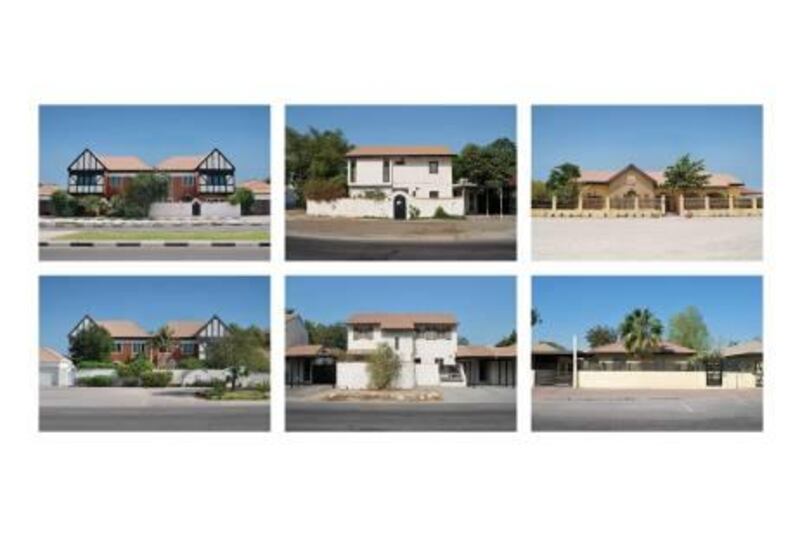SHARJAH // The house smacks immediately of suburban England, its mock Tudor half-timbering redolent of London's fringes or the new estates of a well-to-do provincial city.
But something is off. The sky is too blue to be Britain, and although the plants and grass are green the earth around them is sandy and scorched. This is Dubai.
The photograph is part of a display at the Sharjah Biennial by a young Iraqi artist, Hala al Ani, entitled A Typology of Houses, representing a study of Dubai's sometimes uncomfortably imported architecture.
It started as a research project while Ms al Ani, a freelance graphic designer, was studying photography at the American University of Sharjah.
"I was interested in how people designed, or stylised, their houses and why they chose specific styles and not others. This was the basis of my research," she said.
"I'm not trying to be sarcastic or anything, I'm just trying to study why the architecture has been approached this way.
"I was trying to relate the house style to the environment, whether for example it's on a main road, or is it sandy? The juxtaposition between the style and the environment tells me that the style actually means something. It's not based on a preference only, it might portray social status or other meanings or associations."
She admits, though, that she is not a fan of this style of architecture. "I like architecture to be more responsive to the specific site; these villas are branded, they're trying to look like something else.
"They're trying to imitate other buildings - some of them are trying to imitate Greek styles, or western suburban styles, or traditional, or oriental.
"I'm not interested in stylising a house to look like something, I'm more interested in designing it for the specific purpose of the building.
"I'd prefer designs that are not based on what we are trying to make it look like but are driven by function."
The pictures on display at the Sharjah Art Museum are arranged in groups of six, the villas in each sharing a particular architectural element such as a rounded pediment or gothic features.
"When I classified the photographs into categories that highlight architectural styles - gothic, oriental, traditional - I began to recognise patterns that map the city and its people."
Villa owners who came out to see what she was doing were supportive when she explained she was working on a research project.
One aspect that might strike a viewer is the absence of cars and other urban clutter. Vehicles would normally be parked outside, but there isn't a Prado in sight.
"I wanted to focus on the houses. If any other elements are in the environment then it might suggest something else," she added.
"So I would go back to the location of the house until the environment around it was almost empty. Sometimes I'd go back 10 times."
Jack Persekian, the director of the Sharjah Art Foundation, which organises the Biennial, said: "The way Hala portrays this architecture is really fine. This is one of my favourite photographic projects."
Ms al Ani has lived in Dubai for eight years and previously spent five years in Abu Dhabi. She is continuing to work on the project even though she has now graduated.
She was thrilled, though, to see her photos hanging at the Biennial among work by more than 100 leading international artists. "It was very interesting and very scary because I admire most of them," she said.






